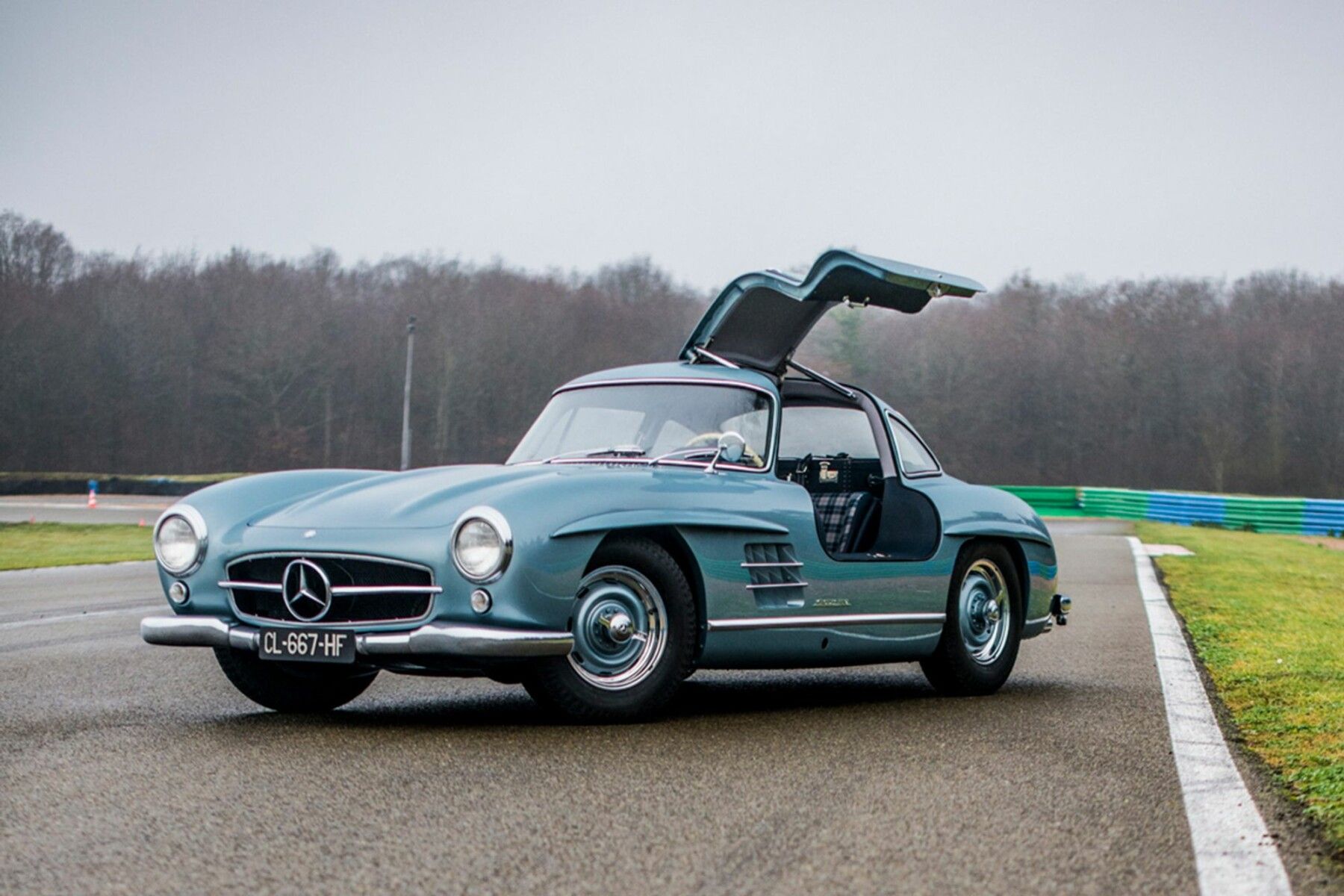The Mercedes-Benz 300SL is one of the most memorable coupes of the 1950s. The gullwing doors not only distinguish it, but they are also a clever way to conceal the car's one-of-a-kind space frame chassis. It's also the most recognizable Mercedes, and almost every serious collection has one. It marked the beginning of "Gullwing" doors and served as an inspiration to subsequent generations. The letters SL stand for "Sport Leicht" (Sport – Light).
The Gullwing Coupe, also known as the W194, was Daimler-first Benz's true sports car after World War II. It debuted in 1952 as a lightweight race car designed for the Mille Miglia. The 300SL's road-going development began in September 1953. It debuted at the International Motor Sports Show in New York in February 1954, based on a racing car from the 1952 season.
The car's origins can be traced back to a Mercedes-Benz W194 race car raced by an American automobile importer named Max Hoffman. He persuaded the board to build a road-going version of the W194. The only issue with the coupe version of the race car was that the overall structure required the manufacturer to build a higher door-sill. However, they still needed to install a driver's door. The solution was a 1939 Bugatti Type 64 model with doors hinged on top of the car. The gullwing doors appeared in this manner.
"Not only is the 300SL Gullwing legendary today, but it was also very special when it was new," says noted restorer Paul Russel. Consider the car in the context of its time, in comparison to its contemporaries in 1954.
An Overview Of The 1954 Mercedes-Benz 300 SL's Powertrain
Several other novelties were hidden behind the streamlined body. Mercedes-Benz used fuel injection in a road car for the first time. When compared to the carburetor racing version, an increase of 40 HP was realized. Drum brakes and swing axle setups were issues with the first batch of SLs. Despite the fact that these were revised in later editions. A lightweight version with an aluminum body and aluminum castings was prepared for some clients, but it was rarely raced. Instead, Mercedes prepared the 300 SLR, which had a lower chassis like the W196.
The engine was a technological marvel. Mercedes-Benz attempted the same with Bosch, after Maserati built gasoline direct-injected units for its race cars using Lucas technology. And they were successful. The engine was an inline-6 from the 300S saloon, with the transmission and suspension setups from that model. The direct-injected inline-6 engine with a 3.0-liter displacement produced 215 horsepower, which was a huge value for the time. The 3.9-liter engine in the 1954 Corvette produced 157 horsepower.
Unlike the 300S, the engine was angled to produce a low front nose. Two large outlets were added to keep the air flowing outwards to help with engine compartment cooling. The 300SL coupe featured dry-sump lubrication, direct fuel injection, a tubular spaceframe chassis, independent suspension, flawless build quality, a very comfortable interior, and, of course, a beautiful and dynamic design that has clearly stood the test of time." The SL Gullwing, as it is known, had a short lifespan, lasting only three years, but it left a legacy that has earned it a place in the Automotive Hall of Fame.
Here's The Cost Of The 1954 Mercedes-Benz 300 SL Through Various Past Auctions, Till Present
The Mercedes 300 SL Gullwing has an interesting history, as it began as just another race car in the early 1950s. Max Hoffman, an American importer, put pressure on Mercedes to make the car a road-going coupe for the masses, and Mercedes eventually did so in 1954. Between 1954 and 1957, 1,400 units were produced, the vast majority of which were sold in the United States. Since then, the car has become desirable and collectible, with some examples fetching more than $1 million. RK Motors Charlotte recently sold a 1954 example for a total of $1.9 million, setting a three-year-high record for the 1954 model.
"The 1954 Gullwing brought this record price because of its pristine condition and flawless mechanics," said Joseph Carroll, president of RK Collection. "This typifies the exceptional quality of the vehicles we make available to car collectors here in the United States and around the world," he continued. This is highlighted by the fact that this transaction represents a three-year high for a 1954 Gullwing, establishing a new price-point in the collector car market.
The car had only driven 45,687 miles in its 61 years of existence – less than 1,000 miles per year. It should be noted that this isn't the most expensive 1954 sold in recent years. Barrett Jackson Collector Car Auction sold one for $2.2 million in 2012. Back in 1954, the 300 SL sold for 29,000 marks, which was quite high at the time – equivalent to $121,000 in U.S. currency.
The car sold for more than ten times its original price in 2015, with a selling price of $1.9 million. That is noteworthy, and it demonstrates how highly valued a vehicle such as the 300 SL Gullwing is. The 300 SL may not be worth its all-time high today, but a car worth $750,000 back then is now worth more than $1 million today.

.jpg)

.jpg)